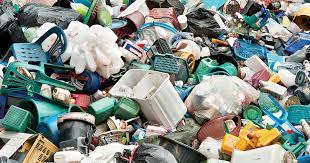Low-Density Polyethylene, or LDPE, is a commonly used plastic known for its flexibility, lightweight nature, and chemical resistance. It is widely found in plastic bags, packaging films, containers, and various household and industrial products. While LDPE Recycling is durable and versatile, its improper disposal can lead to significant environmental pollution, particularly in landfills and water systems. Recycling LDPE not only reduces environmental impact but also conserves resources by converting waste into reusable materials. Effective recycling programs target both industrial and community sources of LDPE, offering practical solutions for sustainable plastic management.
Industrial LDPE Recycling Programs
Industrial LDPE recycling programs focus on large-scale collection and processing of plastic waste generated in manufacturing plants, distribution centers, and commercial facilities. These programs often begin with the collection of post-industrial LDPE, including packaging films, protective wraps, and pallets. Once collected, the material undergoes sorting to remove contaminants such as metals, paper, and other types of plastics. Advanced technologies, such as optical sensors and air classification systems, help separate LDPE efficiently from mixed plastic streams.
After sorting, LDPE is cleaned to remove dirt, oil, and residues, then shredded into small flakes. These flakes are melted and reprocessed into pellets, which serve as raw material for new products, including garbage bags, floor tiles, and packaging materials. Some industrial recycling programs also integrate chemical recycling methods, breaking down LDPE into monomers that can be used to produce high-quality plastic products. This approach is particularly effective for contaminated or mixed LDPE streams that are difficult to process mechanically.
Community LDPE Recycling Programs
Community-based LDPE recycling programs aim to engage households, local businesses, and organizations in the collection and reuse of plastic waste. These programs typically involve curbside collection, drop-off centers, or collection drives for plastic bags, films, and packaging materials. Educating residents on proper segregation is crucial, as LDPE items must be free from food residues, adhesives, and non-plastic components to be successfully recycled.
Once collected, community LDPE is usually aggregated at local recycling centers, where it is cleaned, sorted, and prepared for processing. Smaller-scale facilities often focus on mechanical recycling, converting LDPE into pellets for manufacturing new plastic items. In some cases, community programs partner with industrial recyclers to handle larger volumes, ensuring that collected LDPE enters the supply chain efficiently. Public awareness campaigns, workshops, and incentive-based programs also play a key role in encouraging participation and improving recycling rates.
Innovative Approaches to LDPE Recycling
Both industrial and community recycling programs are exploring innovative approaches to enhance efficiency and sustainability. In industry, advanced sorting and monitoring technologies improve contamination control, while chemical recycling offers an alternative route for challenging LDPE waste. Communities are increasingly adopting initiatives like reusable bag programs, local processing units, and educational campaigns to reduce plastic waste at the source. Some programs also promote upcycling, transforming LDPE into useful products such as mats, storage containers, or construction materials, further extending the life of recycled plastic.
Challenges in LDPE Recycling
Despite these advancements, LDPE recycling faces challenges. Contamination, the presence of multilayer materials, and improper collection can reduce the quality and market value of recycled products. Industrial facilities require investment in specialized equipment, while community programs depend heavily on public participation and awareness. Coordinating between residential collection and industrial processing is essential to ensure that LDPE waste is efficiently recycled rather than discarded.
Conclusion
LDPE recycling programs, whether industrial or community-based, play a critical role in reducing plastic pollution and promoting resource efficiency. Industrial programs focus on high-volume collection and advanced processing, while community programs emphasize engagement, education, and accessible collection methods. By combining mechanical and chemical recycling, as well as innovative reuse strategies, these programs can maximize the potential of LDPE waste. Effective recycling of LDPE ensures that both industrial and residential plastic materials are transformed into valuable resources, supporting a sustainable approach to plastic management and environmental preservation.





